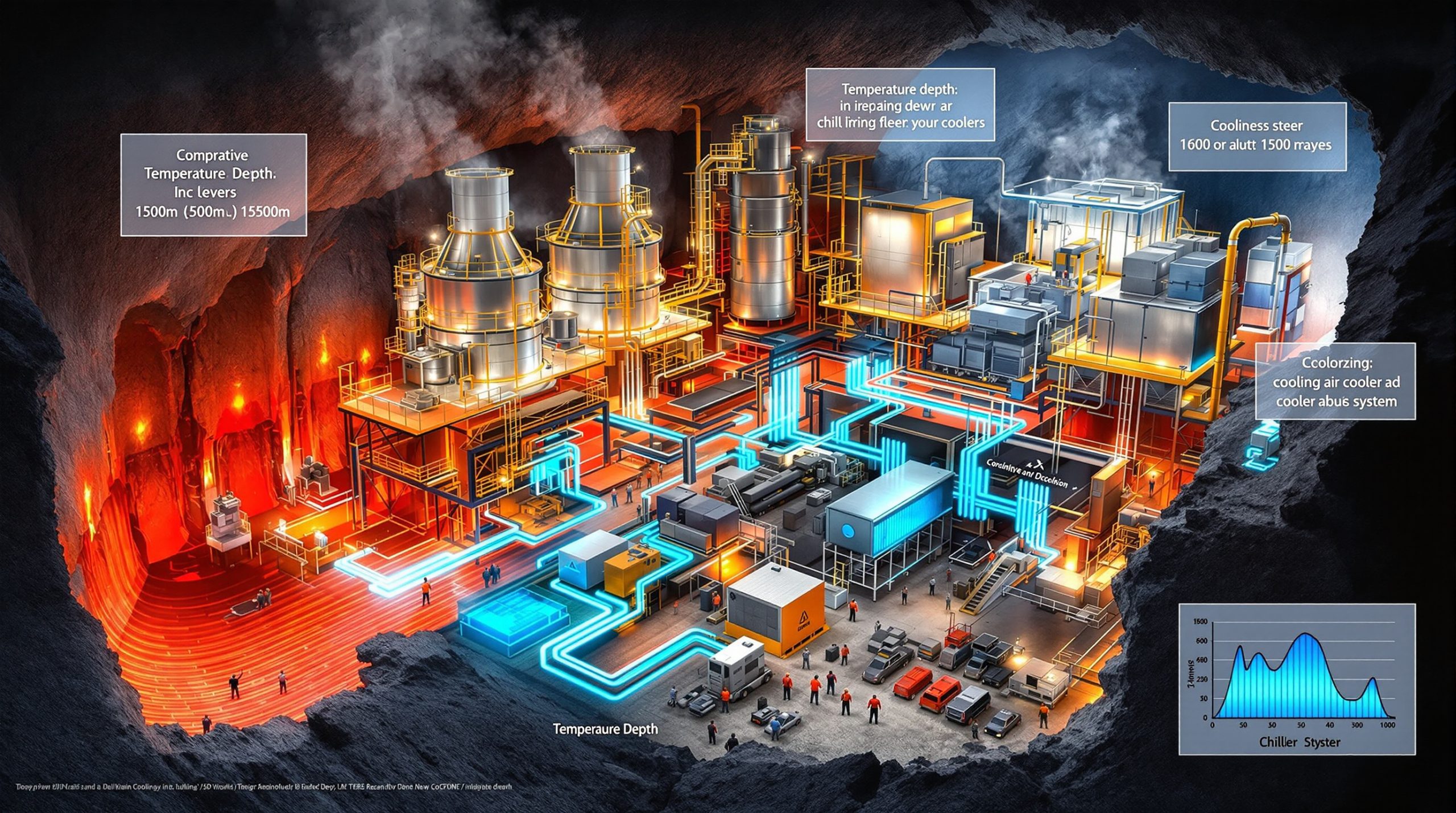What is the Muchea West Silica Sand Project?
The Muchea West Silica Sand Project represents a significant high-grade silica sand resource situated approximately 40km north-northeast of Perth, Western Australia. With an impressive resource of 110 million tonnes of silica sand boasting exceptional purity (99.65% silicon dioxide), Carbine Resources has secured a strategic asset with considerable market potential.
This premium silica sand deposit stands out not only for its remarkable purity but also for its advantageous location. The project benefits from excellent access to established transportation infrastructure, including the Tonkin Highway and the Moora-Kwinana railway line. Perhaps most crucially, its proximity to the Kwinana bulk terminal provides substantial export advantages for future operations.
Project Overview and Location
The Muchea West Silica Sand Project sits in a prime location within Western Australia's resource-rich landscape. The project's strategic positioning just 40km from Perth allows for efficient logistics and reduced transportation costs—a significant advantage when considering the economics of bulk material export operations.
The project area spans across the newly granted mining lease M70/1433 and exploration licence E70/4905, encompassing a resource base that positions Carbine Resources competitively within the global silica sand market. While the project represents a substantial opportunity, it has faced access challenges that have delayed commercialization efforts in recent years.
Key Project Attributes
What distinguishes the Muchea West project is its exceptional silica grade combined with remarkably low impurity levels. The 99.65% silicon dioxide content places this resource in the premium category for various high-value applications, from advanced glass manufacturing to high-tech industries.
The deposit's characteristics make it particularly suitable for applications requiring ultra-pure silica, including photovoltaic glass for solar panels and semiconductor manufacturing—both rapidly growing sectors within the global economy.
With 110 million tonnes of high-grade resource, Muchea West represents one of Australia's most significant silica sand deposits with genuine commercial potential. The combination of resource size, quality, and infrastructure access positions the project favorably against international competitors.
What Does the Mining Lease Grant Mean for Carbine Resources?
The recent mining lease grant represents a crucial milestone in Carbine Resources' development pathway for the Muchea West Silica Sand Project. This regulatory achievement unlocks the next phase of project advancement while providing the company with long-term operational security.
Details of the Mining Lease
Mining lease M70/1433, granted by Western Australia's Department of Energy, Mines, Industry Regulation and Safety (DEMIRS), covers a strategic section of the Muchea West project containing significant high-grade silica resources. The lease comes with an initial term of 21 years—providing Carbine Resources with the long-term certainty essential for major resource development planning.
The mining lease approval demonstrates regulatory confidence in the project's viability and Carbine Resources' operational capabilities. However, while this achievement marks significant progress, it represents just one step in a comprehensive regulatory journey.
Peter Batten, Executive Director of Carbine Resources, noted the significance of this milestone: "Securing the mining lease for Muchea West marks a pivotal moment in our development strategy, though we recognize several important permitting essentials remain before production can commence."
Remaining Regulatory Requirements
Despite the mining lease approval, Carbine Resources must still navigate several regulatory hurdles before mining activities can commence. Environmental approvals represent the next critical regulatory milestone, requiring comprehensive assessment of the project's potential impact on local ecosystems and appropriate management strategies.
A unique aspect of the Muchea West project involves its proximity to the Muchea Air Weapons Range, necessitating special considerations and approvals from the Department of Defence. This security-sensitive location adds complexity to the approval process beyond standard mining developments.
Carbine Resources has indicated that ongoing engagement with the Department of Defence remains essential to address security concerns associated with operations near a military facility. The company has emphasized a collaborative approach with all stakeholders through the next approval phases, recognizing that building and maintaining positive relationships will be crucial to project advancement.
How Does This Development Fit Into Carbine's Broader Strategy?
The Muchea West mining lease approval represents a cornerstone in Carbine Resources' strategic vision to establish itself as a significant player in Western Australia's high-grade silica sand market. This development aligns with the company's broader portfolio approach to resource development.
Carbine's Project Portfolio
Muchea West serves as Carbine Resources' flagship silica sand asset, but recent developments demonstrate the company's commitment to a diversified resource base. Complementing progress at Muchea West, the company has made significant strides with its Down South silica sand project, where it recently secured access agreements with three landowners within exploration licence E70/5823.
These developments reflect Carbine's strategic focus on securing high-quality silica sand resources throughout Western Australia. The company appears to be pursuing a calculated approach to resource development, prioritizing projects with exceptional quality metrics and favorable logistics.
"Our portfolio approach to silica sand development provides Carbine with multiple pathways to market and reduces single-project risk," explained a company representative in a recent statement. "Both Muchea West and Down South offer distinct advantages that position us well in different market segments."
Strategic Stakeholder Engagement
Carbine Resources has demonstrated a sophisticated understanding of the importance of stakeholder relationships in resource development. The company has established productive working relationships with key regulatory bodies including DEMIRS, which proved instrumental in securing the mining lease approval.
The ongoing collaboration with the Department of Defence regarding proximity concerns at Muchea West showcases the company's commitment to addressing complex regulatory challenges through persistent engagement. Similarly, Carbine's success in building relationships with local landowners to facilitate exploration activities at the Down South project highlights effective community engagement.
This emphasis on stakeholder management reflects a recognition that in today's resource development landscape, technical excellence must be paired with strong relationship management. Carbine's long-term engagement strategy appears critical for navigating the complex approval processes that characterize major resource projects in Western Australia.
What is the Market Potential for Silica Sand?
The global silica sand market presents substantial growth opportunities for well-positioned producers like Carbine Resources. Market analysis indicates robust current demand with projections for accelerated growth over the coming decade.
Global Silica Sand Market Analysis
According to Fortune Business Insights data cited in recent industry reports, the global silica sand market was valued at approximately $18.7 billion in 2023, with current market size estimated at $20.2 billion in 2024. The market demonstrates healthy momentum, with projections indicating a compound annual growth rate of 7.7% through 2032.
If these growth projections materialize, the global silica sand market could reach an anticipated value of approximately $35 billion by 2032—representing substantial expansion from current levels. Geographically, the Asia-Pacific region dominates the market with a 29.28% share as of 2023, positioning Australian producers like Carbine Resources favorably due to proximity advantages.
Several factors drive this growth trajectory, including:
- Urbanization and infrastructure development in emerging economies
- Technological advancement requiring high-purity silica inputs
- Renewable energy expansion, particularly solar panel manufacturing
- Growing semiconductor and electronics industries
- Automotive sector recovery and growth
Key Market Applications and Demand Drivers
While construction and glass manufacturing represent traditional demand sectors for silica sand, higher growth rates are emerging from technology-driven applications. Growing demand from high-tech applications, particularly solar panels, creates premium market opportunities for high-purity silica producers.
The semiconductor manufacturing industry requires exceptionally high-purity silica sand for silicon wafer production—a market segment witnessing unprecedented growth amid global digitalization. With Muchea West's 99.65% silicon dioxide purity, Carbine Resources appears well-positioned to target these premium market segments.
Market Insight:
"The high-tech segment of the silica sand market typically commands price premiums of 30-50% over construction-grade material, creating substantial value opportunities for producers who can consistently meet stringent purity specifications." — Industry analyst assessment
Additional stable demand comes from foundry and metal casting industries, which continue to require high-quality silica sand for precision manufacturing processes. Specialty glass products for electronics, including smartphone and tablet screens, create additional premium market segments requiring high-purity silica inputs.
What Challenges Remain for Project Development?
Despite securing the critical mining lease, Carbine Resources faces several significant challenges before Muchea West can transition from development to production. These hurdles require careful navigation and strategic planning.
Regulatory and Access Hurdles
Environmental approvals represent the next significant regulatory milestone for Muchea West. These approvals typically involve comprehensive environmental impact assessments, management plans, and public consultation processes. The timeline for environmental approvals in Western Australia can range from 12-24 months for projects of this nature, depending on complexity and stakeholder concerns.
The project's proximity to the Muchea Air Weapons Range introduces unique regulatory complications requiring special considerations beyond standard mining approvals. This security-sensitive location necessitates extensive consultation with the Department of Defence to address potential conflicts between mining operations and military activities.
The multi-agency approval requirements create potential for extended timelines, as coordination between DEMIRS, environmental authorities, and Defence departments introduces administrative complexity. Carbine Resources must also address any community or environmental concerns that emerge during the approval process, potentially requiring project modifications or additional management commitments.
Path to Commercialization
Beyond regulatory approvals, Carbine Resources faces several operational challenges on the path to commercialization. Detailed feasibility studies will be essential to confirm the economic viability of the Muchea West project under various market scenarios and production parameters.
Significant capital investment requirements for processing facilities and infrastructure development represent another hurdle. While specific capital expenditure figures haven't been publicly disclosed, similar silica sand processing operations typically require investments of $50-100 million depending on production scale and processing sophistication.
- Securing offtake agreements with potential customers will be critical for project financing
- Developing appropriate processing methods to meet market specifications for various applications
- Establishing logistics and transportation solutions for efficient product distribution
- Optimizing operational parameters to maximize economic returns while meeting environmental standards
- Building necessary technical capabilities and operational expertise
Peter Batten, Executive Director at Carbine Resources, acknowledged these challenges: "While securing the mining lease represents a significant milestone, we recognize the substantial work ahead to bring Muchea West into production. Our team is focused on methodically addressing each development hurdle while maintaining an unwavering commitment to responsible resource development."
How Does Silica Sand Mining and Processing Work?
Understanding the technical aspects of silica sand extraction and processing provides context for evaluating Carbine Resources' development pathway at Muchea West. The company will need to implement industry evolution trends while adapting to the specific characteristics of the deposit.
Extraction and Processing Methods
Silica sand mining typically employs surface mining techniques, with the Muchea West deposit likely to follow this established approach. The process generally begins with minimal overburden removal, as many high-quality silica sand deposits sit relatively close to the surface—an attribute that contributes to favorable economics.
Once extracted, silica sand undergoes several processing stages:
- Initial screening to remove oversized materials and debris
- Washing to eliminate clay particles and other contaminants
- Classification to separate sand particles into specific size fractions
- Advanced processing methods such as flotation or acid leaching for applications requiring higher purity
- Drying to achieve specific moisture content requirements
- Final classification and quality control testing
The level of processing sophistication depends largely on the target market applications. While construction-grade silica sand requires relatively simple processing, high-tech applications demand more advanced methods to achieve ultra-high purity levels by removing trace minerals like iron, aluminum, and titanium compounds.
Quality control testing represents a critical component of silica sand production, with rigorous assessment of silicon dioxide content and impurity levels. For premium applications like semiconductor manufacturing, impurity levels are typically measured in parts per million or even parts per billion.
Environmental Considerations
Responsible silica sand operations implement comprehensive environmental management systems addressing several key areas:
- Dust management strategies remain critical during extraction and processing operations, typically including water spraying systems, covered conveyors, and enclosed processing buildings
- Water management systems for processing operations often incorporate closed-loop designs to minimize consumption and prevent discharge
- Rehabilitation planning provides essential frameworks for progressive site restoration, often including native vegetation reestablishment
- Groundwater protection measures during operations prevent contamination of underlying aquifers
- Biodiversity considerations in project design and implementation minimize habitat disruption
These environmental management aspects will feature prominently in Carbine Resources' environmental approval applications for Muchea West. The company's ability to demonstrate best-practice waste management solutions will influence both regulatory outcomes and community acceptance.
Environmental Insight:
"Modern silica sand operations can achieve near-zero permanent environmental footprint through progressive mine reclamation techniques that restore landscapes concurrent with production activities." — Environmental management specialist
What Are the Investment Implications?
The advancement of the Muchea West project through key regulatory milestones creates evolving investment considerations for Carbine Resources and potential partners. The project's inherent attributes position it favorably within the competitive silica sand landscape.
Project Economics and Potential
Muchea West's high-grade resource provides a significant competitive advantage in quality-sensitive markets. The exceptional 99.65% silicon dioxide purity allows targeting of premium applications that command higher prices and typically show more stable demand patterns than construction-oriented markets.
Proximity to export facilities at the Kwinana bulk terminal reduces transportation costs—a critical factor for bulk commodities where logistics expenses can significantly impact overall economics. This advantageous location potentially provides a 10-15% logistics cost advantage compared to more remote operations.
The newly-secured 21-year mining lease provides long-term security for investment planning, allowing Carbine Resources to pursue appropriate capital structures and partnerships with confidence in tenure stability. This extended operational horizon aligns well with the growing global market, which offers expanding revenue opportunities throughout the lease period.
Premium pricing potential for high-purity silica sand products creates attractive margin opportunities. While standard construction silica typically sells for $50-80 per tonne, high-purity material for specialty applications can command $150-300 per tonne depending on specifications and application requirements.
Comparative Position in the Market
Australia is positioned as an emerging supplier in the global silica sand market, with Western Australia's stable regulatory environment providing investment security that differentiates it from some competing jurisdictions. This regulatory stability, combined with resource quality, creates a compelling investment narrative.
The Muchea West project's quality metrics compare favorably with other global silica resources. The combination of high purity, significant resource size, and logistical advantages positions the project competitively on the international stage.
Carbine Resources' strategic location offers particular advantages for servicing Asian markets, where demand growth outpaces global averages. The company's proximity to key manufacturing hubs in Japan, South Korea, Taiwan, and China provides opportunities to establish long-term supply relationships with technology manufacturers requiring consistent, high-quality silica inputs.
Investment Perspective:
"High-purity silica sand projects with established infrastructure access and proximity to growing Asian markets represent a compelling value proposition when compared to many alternative resource investments." — Resources sector analyst
FAQ: Muchea West Silica Sand Project
What makes silica sand from Muchea West special?
The Muchea West silica sand resource contains exceptionally high purity levels at 99.65% silicon dioxide with very low impurities. This exceptional quality makes it suitable for premium applications including high-tech manufacturing and specialty glass production, where chemical composition directly impacts product performance. The resource's combination of size (110 million tonnes), quality, and location creates a compelling commercial opportunity.
What approvals are still needed before mining can begin?
Despite securing the mining lease, Carbine Resources still requires several critical approvals before mining operations can commence:
- Environmental approvals from Western Australia's regulatory authorities
- Specific consents related to the nearby Muchea Air Weapons Range from the Department of Defence
- Various operational permits and licenses for water usage, land clearing, and specific activities
- Local government approvals for associated infrastructure and facilities
The timeline for these remaining approvals typically ranges from 12-24 months, depending on complexity and stakeholder engagement outcomes.
How does the global silica sand market affect this project?
With the global silica sand market projected to grow from $20.2 billion in 2024 to approximately $35 billion by 2032 (7.7% CAGR), the timing of Carbine's project development aligns favorably with expanding market opportunities. The Asia-Pacific region dominates with 29.28% market share, providing geographical advantages for an Australian producer like Carbine Resources.
Market growth is particularly strong in high-value applications like solar panels, semiconductors, and specialty glass—precisely the segments where Muchea West's high-purity material has competitive advantages. This market alignment creates potential for premium pricing and stable demand throughout the project lifecycle.
What other projects is Carbine Resources developing?
In addition to Muchea West, Carbine Resources is developing the Down South silica sand project in Western Australia. The company recently secured access agreements with three landowners to commence exploration activities within exploration licence E70/5823, demonstrating progress on this secondary project.
This portfolio approach provides Carbine with diversification benefits and multiple development pathways. While Muchea West represents the company's flagship silica sand asset, the Down South project offers complementary opportunities that could eventually create operational synergies and market flexibility
Ready to Catch the Next Major Mineral Discovery?
Stay ahead of the market with Discovery Alert's proprietary Discovery IQ model, which instantly notifies investors of significant ASX mineral discoveries, turning complex data into actionable insights. Discover why major mineral finds can lead to substantial returns by exploring our dedicated discoveries page and begin your 30-day free trial today.




